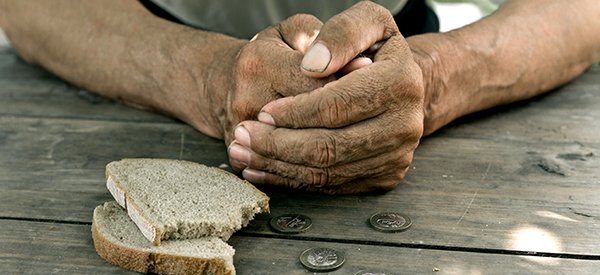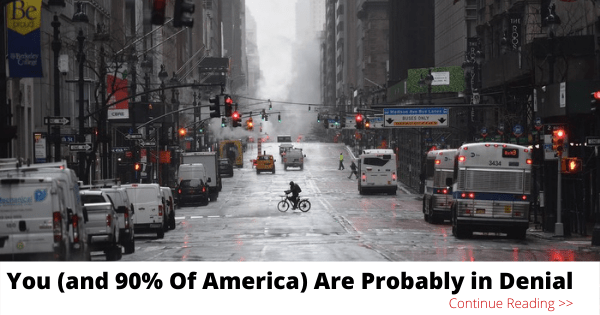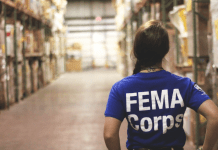The hoarding and shortages of the COVID Pandemic are actually not something new to the American scene.
While it has been over a half a century since such things happened, the early history of the United States, all the way up into World War II, there were times of shortage, when people were hoarding everything from flour to toilet paper.
Interestingly enough, other than one or two periods of serious drought, in every one of these cases the food shortages have been second-order crises, caused by something else, mostly wars.
Yet there were other things that caused food shortages too, like the Great Depression.
Food Shortages Aren’t What They Seem
One of the interesting lessons to be taken from the COVID-19 pandemic is that a food shortage doesn’t mean that food doesn’t exist. It means that food isn’t on the shelves, where customers can buy it.
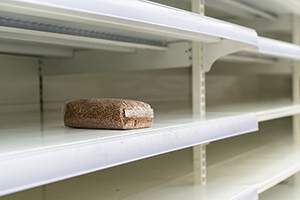

During the height of the 2020 shortages, there was plenty of food on our nation’s farms, in grain silos and at food processors.
In fact, there was so much excess food that farmers and producers were destroying millions of dollars worth of it. Yet grocery store shelves were bare across the country.
Much the same thing happened during the polar vortex freeze in February of 2021. People again rushed to the grocery stores, stockpiling food to get through the crisis. Within 24 hours, the grocery store shelves looked the same as they had during April of the previous year. Yet there was no shortage of food on the farms, in grain silos and at food processors.
The problem in both of these recent cases was a combination of people hoarding and lack of sufficient transportation. It’s important to note that the hoarding we’re talking about here is considerably different than what preppers do. Preppers build up a stockpile over considerable time, which doesn’t noticeably affect supplies in the stores.
On the other hand, hoarders wait until the last minute and then try to buy the stores out, making several trips to do so, if necessary. Sadly, they don’t save that food for the next potential crisis, giving them the opportunity to do it all over again.
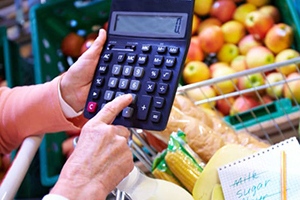

Now that people have seen what happens to the supply chain in an emergency, we can expect this to become much more normal.
Even for smaller disasters where hoarding is not indicated, many people will do so; and they’ll do so with items that it doesn’t make sense to stock up on. Remember the toilet paper shortages?
But the more critical lesson is about prices; because those will ultimately have a greater impact in future shortages.
Just like we saw the prices of eggs, milk and a host of other things go up during the 2020 shortages; we can expect them to go up in any future disaster that brings shortages along with it. That’s nothing more than the law of supply and demand in action.
Our Looming National Debt
But here’s the thing; the very next crisis we might all face could be an economic crisis. The Coronavirus bills that have been pushed through Congress in the last year have brought the national debt up to just shy of 30 trillion dollars in an effort to forestall that crisis.
Some economists were talking about the debt being unsustainable when it topped $10 trillion. That was 22 years ago and we’re now triple that much.
Few people realize the seriousness of this situation.
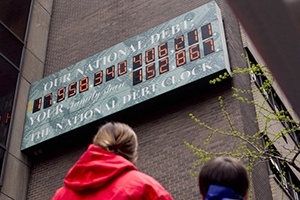

We’ve become accustomed to our country having a huge federal debt and one you get past the first trillion, the number is so big, that most people really can’t wrap their head around it. We slipped past the point of our national debt being greater than our nation’s GNP, with hardly anyone noticing it.
That’s supposed to be a tripwire leading to economic collapse, so there are a few of us who are holding our breath, waiting to see when it happens.
There are always economic gurus who are claiming that we’re on the brink of a financial disaster. Right now the only ammunition they need to back up this argument is the national debt. That’s what has caused other countries to go over the financial cliff in recent years, including both Argentina and Greece.
Based upon those two examples, we should have already seen our economy collapse. But it hasn’t. So we have to ask ourselves why. What has kept our economy afloat, when those other countries couldn’t do it?
The answer boils down to the US economy being the largest in the world, which is a major part of the reason why the American Dollar is the world’s reserve currency.
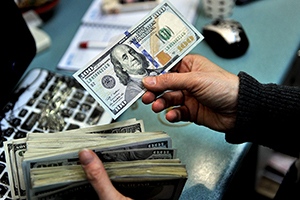

Countries literally have to have US dollars in order to do international trade, because other than in a few cases where countries have signed agreements between themselves to use their own currency for trade (like trade between Russia and China), all international trade is paid for in dollars.
This has allowed our country to export some of our national debt, encapsulated in American Dollars and Treasury Bonds. Other countries unwittingly support our massive debt, because they pretty much have to. Should the world get together and decide not to, we’d be in trouble.
How An Economic Collapse Causes Food Shortages
What this means is that a financial collapse could actually happen at any time, pretty much without warning. If it does, the best model for how it would go would be to look at what happened during Argentina’s collapse in 1999.
Roughly 25% of the population was out of work, with runaway inflation making it harder and harder for those who were working to make ends meet.
During that collapse, food was the greatest shortage that people had to deal with. Just like our shortages during the pandemic, there was plenty of food on Argentina’s farms too. But it wasn’t making it to the store shelves; not because of lack of transportation, but due to pricing.
The entire food industry runs on very narrow profit margins. Grocery stores usually only make about a 2.2% net profit.
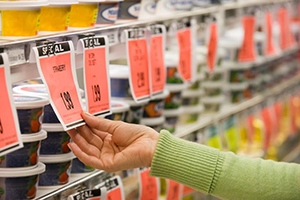

The basic business model they operate under is that they make up for that lack of profit through selling a high amount of volume.
But if prices are rising rapidly, such as they would do during a financial collapse, that small amount of profit they make quickly turns into loss.
They can’t turn their inventory fast enough to ensure that they make a profit on the food they buy.
Someone running a grocery store has two choices during such a time. They can either hold onto the things they buy, waiting until they can sell them at a higher price or they can raise prices. Both actually end up happening to varying degrees, as those stores try to make enough of a profit to stay in business.
Here’s where we often get it wrong. We tend to think of food shortages of there not being any food at all. But even in the midst of the worst food shortages the world has ever seen, there has always been food.
The problem isn’t that there is no food, but rather that there isn’t enough to go around. We can see that throughout history and we can still see it in various parts of the world today.
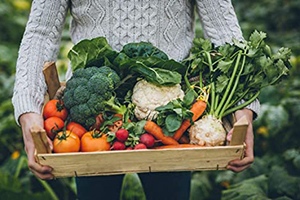

The only people who will have food in abundance will be those who have enough money to buy the food they need, at ridiculously inflated prices or those who can grow their own.
This same thing happened during the Great Depression. People who lived in rural areas generally had enough food to eat, even if they didn’t have anything else.
On the other hand, people out of work in the cities were standing in soup lines, trying to get something to fill their bellies. These are the people who were on the edge of starvation, and we’ll see them again, the next time we have an economic collapse.
The Government Won’t be Able to Bail Us Out
Most of the population is now conditioned to think that the government will bail them out when that time comes. With over 80 years of the government giving out food stamps and the various “COVID stimulus packages” which have been approved by Congress, people have become accustomed to the government being there for them, providing for their every need, even if they weren’t well provided for.
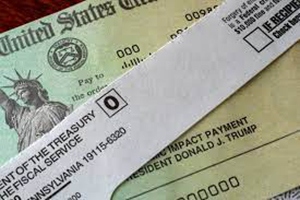

The only way they could, would be to issue more fake money as “quantitative easing,” just like they have with the COVID stimulus packages, increasing the national debt even more.
But if the national debt ends up being even a portion of the cause for the economic collapse, then it will probably be impossible for the government to keep giving out those payments, even if they start out doing so.
During Greece’s economic collapse, the World Bank forced them to adopt economic austerity measures, in order to bring the nation’s debt back under control. That meant dropping many of the country’s social programs and leaving people to sink or swim on their own. There’s absolutely no reason to think that things would go any different, when our own financial collapse comes.
As we find ourselves being pushed into the next economic crisis, we can expect the media to make a big deal of the people suffering. Of course, if there’s a president in office that they like, they will try to minimize that reporting. But even then, as things get worse, they’ll start putting pressure on the government to offer more aid. But if the government can’t do that, it will just be so much noise.
Once again, we’ll be faced with a time when the only people who will be in good shape financially speaking will be those who are able to care for themselves. Since we have a smaller percentage of our population living in rural areas, that problem will be more pronounced.
Nevertheless, we are in a time when at least preppers are seeing the need to grow their own food, so at least some people will have food to eat. But that isn’t going to be much help to those who haven’t prepared.
The only solution for many of those people will be to steal what they can. In the February freeze, my brother-in-law, who lives in Fort Worth, lost a large part of his firewood pile to people stealing firewood from him.
That’s a pretty clear indicator of what will happen to our food and other supplies, when the economic collapse comes. If we expect to be able to feed our families, we’re going to have to protect that food from those who would take it from us.
The big question is, are you ready for that day to come?



